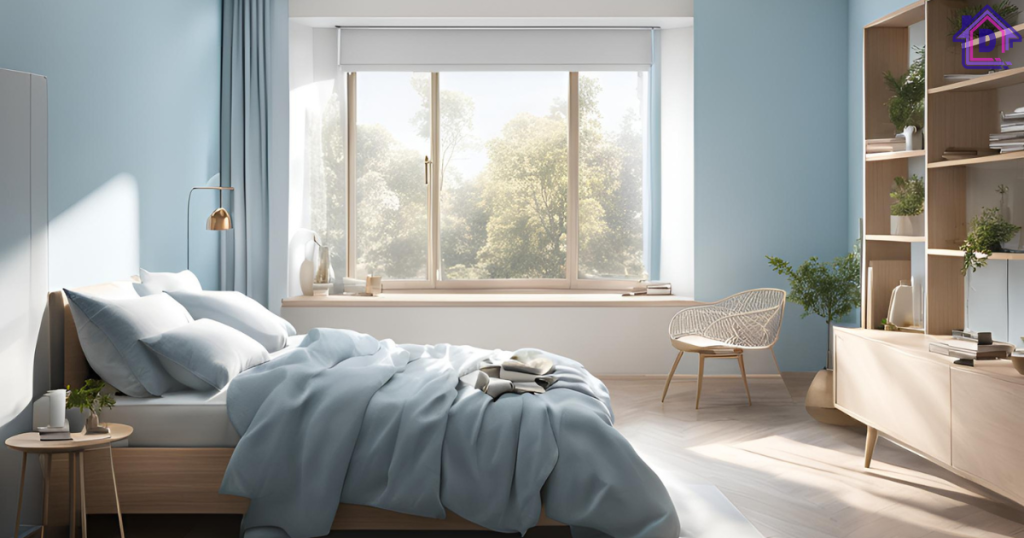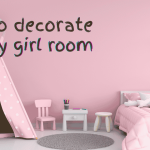When it comes to decorating small spaces, choosing the best colour schemes is crucial. It can make a room feel more inviting, and stylish. The colours you select can impact how you perceive the size of the room, the amount of light it receives, and the overall mood. In this article, we’ll explore the best colour schemes for small rooms with various colour ideas, combinations, and strategies to help you transform your small room into a cosy haven.
Why Color Matters in Small Rooms
Our emotions and perceptions are strongly influenced by colour. In small rooms, the right colours can open up the space and create an illusion of depth. Lighter shades, for instance, reflect more light and make a room feel larger. On the other hand, darker hues can add warmth and intimacy. The best colour schemes for small rooms will consider these elements to create a balanced and harmonious environment.
Best Color Combination for Small Rooms
- White and Light Gray
- White is a classic choice that brightens up any space. Pairing it with light grey adds depth without overwhelming the room.
- Tip: Use white for the walls and light grey for furniture or accents. This combination creates a sophisticated look.
- Soft Pastels
- Colours like mint green, soft pink, and pale blue are perfect for small rooms. They add a playful touch while keeping the space light and airy.
- Tip: Use the other pastel colours as accents and pick one as the primary shade.
- Beige and Cream
- A warm beige combined with cream creates a cosy atmosphere. This palette works well in bedrooms and living areas.
- Tip: Use textured fabrics to add interest, such as a cream rug on a beige floor.
Here’s a table chart featuring suggested the best colour schemes for small rooms, including colour codes:
| Color Scheme | Primary Color | Color Code (Hex) | Effect on Room |
| Soft Pastels | Light Peach | #FFDAB9 | Creates a calm and soothing atmosphere, making the room feel airy and open. |
| Monochromatic Blues | Sky Blue | #87CEEB | Adds warmth and comfort, creating a cosy, inviting space. |
| Earthy Tones | Olive Green | #708238 | Adds warmth and comfort, creating a cozy, inviting space. |
| Bold and Bright | Turquoise | #40E0D0 | Energizes the space, making it feel vibrant and cheerful. |
| Classic Black and White | Jet Black | #000000 | Creates a timeless and sophisticated look, enhancing elegance in small areas. |
| Soft Neutrals | Soft Gray | #A9A9A9 | Offers a gentle, relaxing vibe, making the room feel more spacious. |
| Warm Cozy Colors | Warm Taupe | #D2B48C | Infuses warmth and comfort, creating a snug environment. |
| Fresh Greens | Sage Green | #B2AC88 | Invigorates the space, promoting a fresh and lively atmosphere. |
| Romantic Lavender | Lavender | #E6E6FA | Evokes a sense of serenity and romance, ideal for relaxation. |
| Cool Gray and Aqua | Cool Gray | #BEBEBE | Enhances modernity and freshness, making the room feel bright and open. |
What Colors Are Good for Small Rooms?
The best colour schemes for small rooms should enhance light and openness. Here are some popular choices:
- Light Blues: These colours evoke calmness and tranquillity. Light blue walls can mimic the sky and create a sense of space.
- Pale Yellows: A soft yellow brings warmth and cheerfulness without being overpowering. It’s great for kitchens or playrooms.
- Light Greens: Nature-inspired hues make a room feel fresh and vibrant. Light green is particularly effective in spaces where you want to create a relaxing vibe.
Small Room Color Ideas
- Monochromatic Schemes: Using varying shades of one colour can create a seamless look. For example, different shades of blue can be the best colour schemes for small rooms that add dimension while remaining cohesive.
- Accent Walls: Choose one wall to paint in a bolder colour. This can add depth and interest without making the entire room feel smaller.
- Two-Tone Walls: Consider painting the lower half of the wall in a darker shade and the upper half in a lighter colour. This trick draws the eye upward, making the ceiling feel higher.

Best Color Schemes for a Bedroom
When decorating a small bedroom, the goal is to create a peaceful sanctuary. Here are some effective colour schemes:
- Cool Neutrals: Soft greys and whites create a calming environment. Add texture with blankets and pillows for warmth.
- Earthy Tones: Shades of brown and green provide a grounding effect. These colours are perfect for creating a nature-inspired retreat.
- Bold and Bright: If you’re feeling adventurous, consider a bright accent wall paired with neutral bedding. This can inject personality into your space.
What Colours Are Best for Small Rooms?
In summary, the best colour schemes for small rooms depend on the desired atmosphere. Light colours create openness, while darker shades can add intimacy. Experimenting with different combinations is key to finding what works for you.
Tips for Choosing the Right Color Scheme
- Consider Natural Light: Observe how the room changes throughout the day. Colours may appear differently under varying light conditions.
- Sample Paints: Before committing, test paint colours on a small area of the wall. This will help you visualize how the colours work together in your space.
- Think About Functionality: Choose colours that complement the purpose of the room. For example, calming hues work well in bedrooms, while vibrant shades may be better for playrooms.
Conclusion
In conclusion, selecting the best colour schemes for small rooms is essential to maximize space and enhance comfort. By considering light, function, and colour psychology, you can transform a small room into a stylish and inviting haven. Remember to explore combinations like soft pastels, monochromatic themes, and accent walls to create the perfect look. The colours you choose can make a world of difference, so take your time to find what resonates with your style. With the right approach, even the smallest rooms can feel expansive and welcoming.


